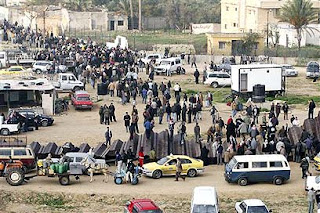Winograd winds up
 Gulp.
Gulp.
Ehud Olmert has squeaked through after a probe into the misconduct of the Lebanon War underlined failings in the military and government leadership. The political fallout still is reverberating. Ynet sums it up here. The 500 page report lambasts the leaders for a lack of victory.
"We found serious failures and shortcomings in the highest level of the military command, especially in the ground forces, the quality of deployment, preparedness, launching and implementation of decisions and orders," Judge Winograd was quoted by the wires.
Yet his 500-page report appeared to give an important boost to Olmert, who had faced the possibility of harsher criticism that could have threatened his job and his stated goal of signing a peace treaty with the Palestinians within a year.
Officials in Olmert's office said they were optimistic after an initial glimpse of the report. Olmert's spokesman, Jacob Galanti, was quoted by Israel TV as saying the prime minister's office was "breathing a sigh of relief."
Winograd said a last-minute ground offensive in Lebanon failed because it did not improve Israel's position ahead of a cease-fire and added the army was not prepared for that battle. [The bodycount was high for a quickie war. More than 1,000 Lebanese were killed, most of them civilians, plus about 160 Israelis.]
More than 30 Israeli soldiers were killed in that final offensive launched shortly before a U.N.-brokered truce went into effect. Olmert had come under severe criticism for ordering the battle, despite his contention that the offensive improved Israel's position before the cease-fire.




































